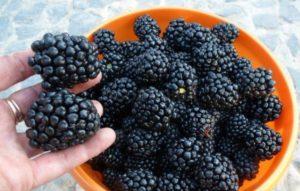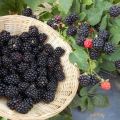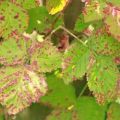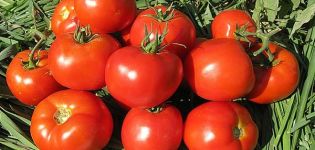How to make a trellis for tying a blackberry with your own hands and tie it correctly
The importance of trellis for blackberries is invaluable. Such constructions have a positive effect on the quality of fruits, the speed of their ripening. Trellises also protect the plant from harmful external factors.
Design advantage
The use of trellis structures has many advantages:
- ripe berries are not contaminated, are not damaged by pests that live on the soil;
- the plant is well ventilated, which reduces the likelihood of being affected by a fungal disease;
- raised lashes do not get dirty on soil particles during rain or irrigation;
- uniform penetration of sunlight accelerates the ripening of berries.
Also, such designs facilitate the process of caring for the plant:
- planting is easier to irrigate, it becomes possible to mulch the soil;
- during pruning of old lashes, young shoots are not damaged, since they are not intertwined;
- it is easier to harvest on tied structures.
Varieties
There are 2 types of trellis structures:
- The single-lane structure is mainly used in small areas.
- The two-lane model is essential in large farmland environments.
Single-strip model
It is the simplest design. The basis is dug-in posts, between which a wire thread is fixed. The height of such a support is set at the mark of human height. Such supports can be not only vertical, but also inclined, fan-shaped, horizontal.
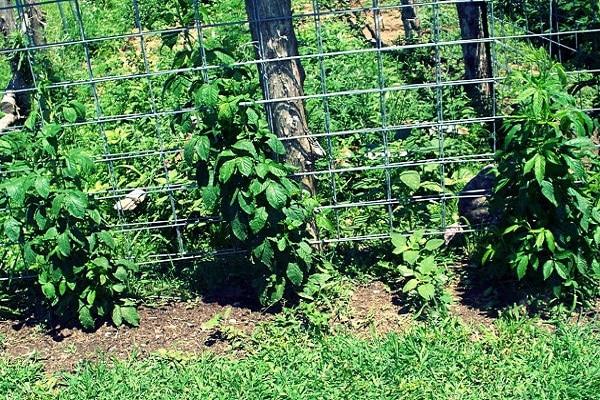
Two-way
This design is similar to single lane, but the columns are installed in two rows. Such a support makes it easier to tie the blackberry, facilitates the formation of the plant, and protects it from thickening. By their structure, the supports are divided into 3 types: T, V, Y-shaped.
T-shaped
Such a trellis is formed from upright columns. Horizontal beams are fixed to these elements at an equal distance. A wire thread is attached along the edges. Thus, two guides are formed for the garter of the lashes.
V-shaped
This design is characterized by the fact that the posts are installed at an angle. Wire guides are attached to the upper ends of the trellis.

Y-shaped
Such tapestries are one of the most difficult. Basically they are made on hinges. This structure allows the structure to be rotatable.
Do-it-yourself blackberry trellis
To make a trellis support for tying blackberries, you need to know a few nuances. First of all, you need to prepare all the necessary materials:
- wooden or metal posts;
- 2.5-3 meters of wire.
Making homemade trellis occurs according to the following instructions:
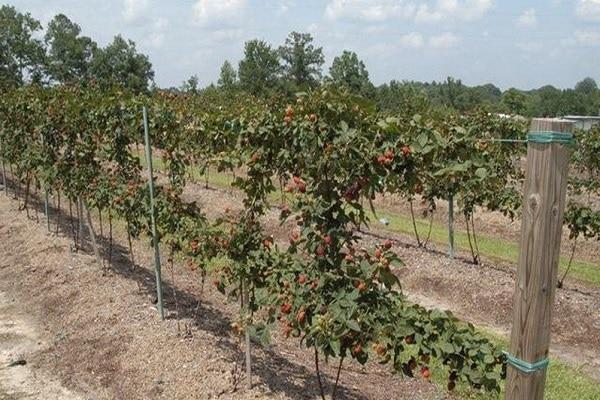
- From the beginning of the row with a blackberry bush, a hole is formed under the column, the best option is deepening 50-60 centimeters.
- Another hole is formed from the end of the row. If the row is long, then several supporting columns are required. The distance between the posts must be kept at 5-6 meters.
- Blackberry plantings are divided at regular intervals.
- A gravel layer mixed with brick chips is laid on the bottom of the hole. This is necessary to strengthen the position of the columns.
- The pillars are installed vertically upward in the prepared holes. After that, the pillars are buried in the ground and well tamped with their feet or materials at hand.
- Next, three tiers of steel wire are stretched between the support posts. The horizontal distance between the wires should be about 0.6 meters. The wire must be tightly tightened so that it does not sag. On the extreme posts, the wire is carefully fixed.
Such a three-tiered trellis structure is suitable for growing any blackberry variety.
Metal supports
Metal supports can be used to form any type of trellis. In this case, metal pillars can form both single-lane and two-lane models.

Fiberglass reinforcement
Such material is used to form double-lane trellis supports. In this case, instead of wire, similar fiberglass beams can be laid as guides.
Technology for tying a bush to a support
In order for the trellis to give maximum efficiency, you need to know how to tie a blackberry to it. When tying to the simplest trellis, the branches must be fixed to the wire as they grow.
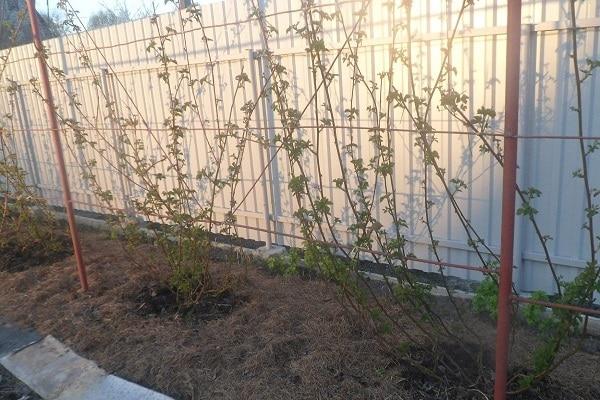
The nuances of the formation of bushes on a trellis
The branches can be located on the trellis support in different ways. To tie them up correctly, you need to pay attention to the peculiarity of the type of crown of the blackberry variety. There are several effective ways to tie a garter.
Weaving method
This weaving method is used in the spring. With the onset of spring, at the time of the opening of the blackberry, last year's twigs are intertwined. In this case, the branches twine around the lower tiers of the trellis support. And young shoots rise to the upper tiers. Young shoots are fixed without interlacing.
Fan way
To ensure such a garter, it is necessary to maintain a distance between landings of 2-2.5 meters. The twigs are fixed to the lower tiers immediately after opening. Young shoots are attached to the upper rail. Such fixation allows you to create conditions for the active growth and development of the blackberry bush.
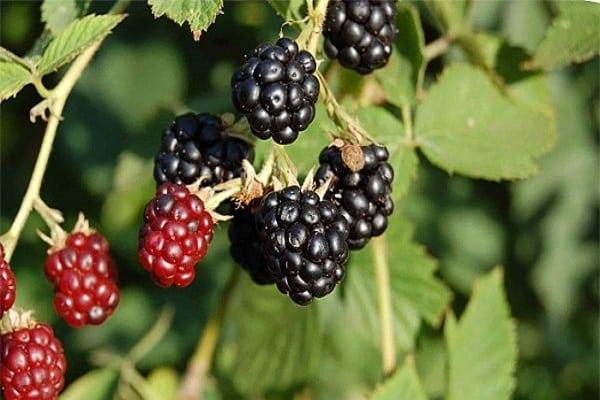
Unilateral tilt
To facilitate the harvesting process, you can use the one-sided tilt tie method. To do this, last year's and young branches are bred on different sides of the support.
Various materials are used to fix the lashes to the supporting structures. Most often, pieces of twine or plastic clamps are used.
The use of such a trellis structure allows you to get a harvest of 10-15 kilograms from 1 running meter of the constructed hedge. Also, such structures will accelerate the development of the shrub, protect it from the spread of diseases, pests crawling on the soil, and darkening of the plant.
